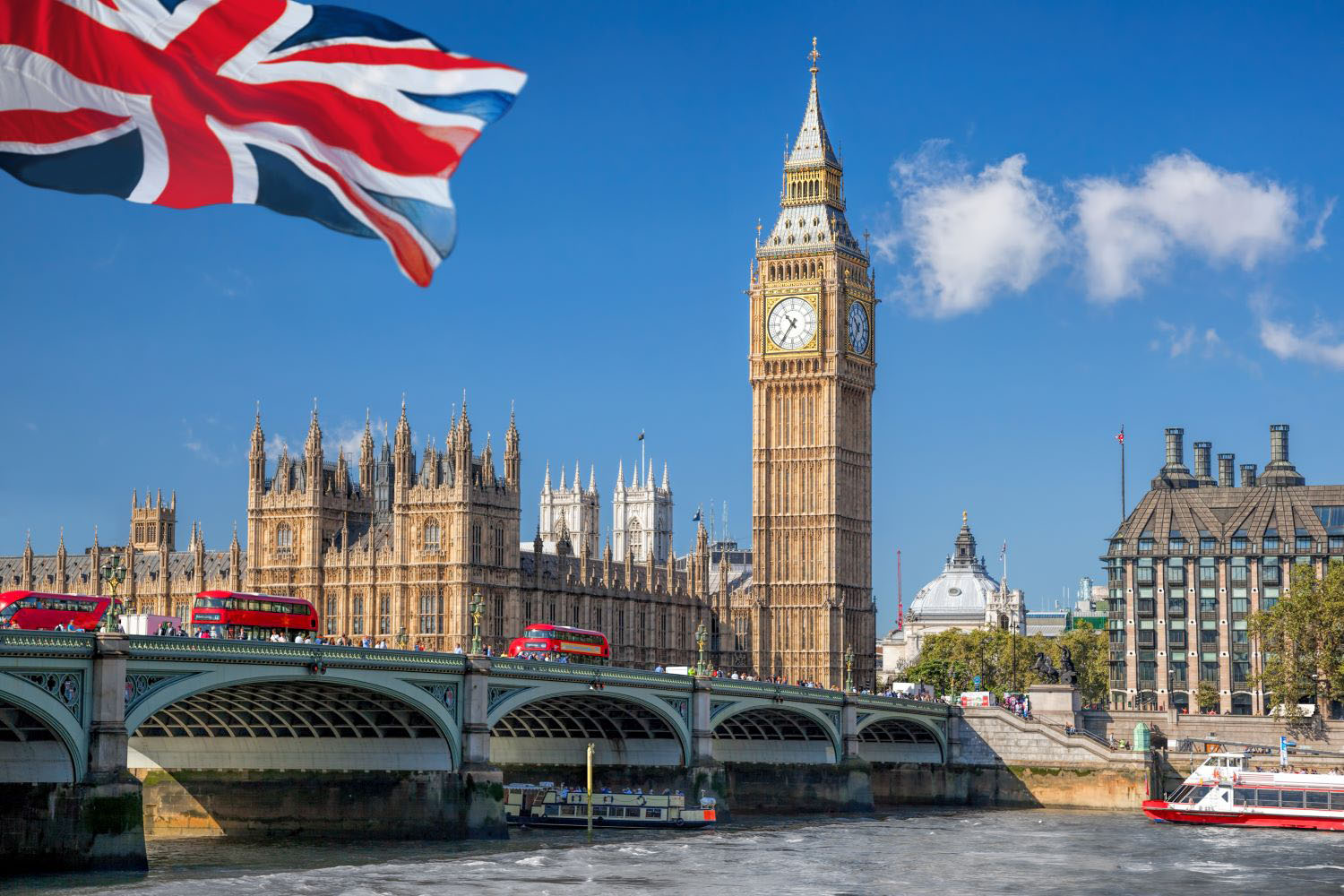Recommended

Blog Post
“I saw the Angel in the marble and carved until I set him free.” Michaelangelo, on David, (apocryphal)
If the ODA budget is to be cut, doing so will be painful, messy, and imperfect, but there is a way to wield the chisel well. The Office for Budget Responsibility predicts a 12 percent decline of GDP in 2020 and the Institute for Fiscal Studies that it will take till 2023 to return to current levels; even if the 0.7 percent pledge is maintained, the aid portfolio is facing a substantial haircut. Unlike Michaelangelo, the task is not to find David in the marble–the ODA portfolio was not perfect, will not become so, and cuts will involve sacrificing some things that make the world better. But the current portfolio can be improved in its strategic coherence, by eliminating its least effective programmes and by diversifying the instruments it uses to increase its efficiency. A good process for selecting and structuring cuts can achieve this. Even more important, this will improve the quality of ODA spending in perpetuity. This note sets out what this process should look like and suggests specific areas which should be cut or protected.
To the extent that ODA spent well improves the welfare of the world’s poorest, less ODA is indisputably a bad thing, but there is a hierarchy to be respected in making cuts. Some things should be protected at all costs–specifically, the use of ODA in the poorest places in the world, on interventions the UK is well placed to run effectively and efficiently, which have been rigorously evaluated and found to work. At the other extreme some things should be cut even if the budget was increasing e.g. expensive programmes that attempt to marry development and UK objectives but achieve neither. In between, there is spending which is less proven in achieving development outcomes but may sometimes generate great value, and programmes which may have smaller development returns but perhaps achieve some UK interests. Many of these will nevertheless need to be cut. Reorienting the portfolio should involve:
- Strategic prioritisation, sharpening the focus of ODA on the biggest, most important global development challenges the UK can affect, in partnership with developing countries.
- Prioritising effectiveness and efficiency, by protecting spending on programmes that we know to work in areas of strategic importance, and by cutting poorly implemented ones.
- Developing a broader set of tools, so diplomacy, CDC and–eventually–an international green investment bank replace the use of ODA where they can be equally or more effective–especially in middle-income countries.
Applying these principles in practice yields specific recommendations:
- Country portfolios in poorer countries should retain most of the grant ODA available, subject to trimming on strategic and effectiveness grounds.
- The Prosperity Fund; the Conflict, Stability and Security Fund; and Home Office use of ODA, none of which demonstrate strong UK or development returns, should all be cut severely or entirely.
- Large, weakly administered research funds that often spend in rich countries such as the Newton Fund and the Global Challenges Research Fund should be closed.
- ODA used to pad out the budget of UK institutions such as the British Council, universities (through scholarships), and the BBC should be cut wherever necessary.
- Development spending managed by expensive central programmes with little country-level demand should also—with few exceptions—be cut where necessary.
- Interventions with weaker evidence for impact should also be cut if necessary, such as most active labour market interventions and spending on training for micro and small business.
A strategic approach to cuts
Deep cuts to the aid budget should be used to focus ODA on the things it is best suited to achieve. A predictable side effect of the 0.7 percent legislation has been pressure to use the ODA budget to spend on things that ODA is not well suited to do in places where it isn’t a powerful tool—for example, to deter migration from middle-income countries; now is the time to cut all such uses and focus on where it works best.
This means protecting spending on things the UK can do effectively in very poor countries which face a resource constraint that ODA can alleviate. In practice, this covers most country programming in the poorest countries. ODA in poorer places is more likely to relieve a real resource constraint and thus achieve progress that would otherwise not happen, and is much more likely to large enough relative to the size of the economy to really change outcomes and shift incentives. There is also a great deal of evidence on which interventions work well, and why, which can be used to help focus these portfolios on the most impactful spending. Throughout any cuts, protecting this use of ODA should be a priority.
This principle also suggests ruthless cuts to the Prosperity Fund and similar programmes. The Prosperity Fund attempts to use ODA to achieve UK objectives and development objectives together, at the cost of doing both poorly. Large scale spending of grant ODA is a poor way of opening markets or generating new investment opportunities. In practice the programmes under the fund appear to include huge investments in training, “business environment strengthening” (usually a euphemism for helping countries improve their Doing Business score) and digital entrepreneurship. In the absence of any rigorous evaluation, it is difficult to see, from the project descriptions, how they would either make a dent in poverty or open markets to the UK. The Prosperity Fund is an egregious example, but not the only one: Home Office spending of ODA on migration deterrence and the Conflict, Stability and Security Fund (CSSF) are equally weak. The CSSF received an amber/red rating from its ICAI review, and some of the major Home Office administered projects appear to be floundering severely – the £90m Hunter-Chaucer project, for example, has spent less than 40 percent of its budget more than 90 percent of the way through its expected life, and the evidence of benefits achieved on DevTracker appears to be a list of press releases and tweets and a two page report without a single reference or piece of data.
Similarly, cuts should curtail the use of ODA to pad out the budget of UK institutions on the basis of dubious soft power returns. The British Council, BBC, and use of ODA to fund scholarships should all be under pressure. University scholarships, while clearly good for UK universities, are hardly targeting the poorest. Meanwhile, funding cultural outreach institutions without any real evidence of either soft power or poverty and development returns is even harder to justify when the overall resource envelope may be so significantly restricted. A better approach is possible.
Instead, the guiding principle for budget allocation should be to design portfolios in partnership with the countries the UK is working in, on problems the UK has capacity to help address. Both for development and soft power reasons, working in partnership with government, civil society and the private sector in developing countries makes much more sense than programme design driven by the needs of UK institutions. With a smaller budget, soft power will be maximized by being a good partner, not just a generous one. However, partnership implies an equal relationship–the answer is not to simply build every football stadium or other white elephant partner governments request, but to focus on those things the UK is well placed to respond to. Soft power and effectiveness go hand-in-hand, with influence and reputation seeded by effective intervention into problems that matter for partner countries. The UK should consider carefully its absolute advantage in different development sectors, where its expertise, experience, and approach add up to its most effective interventions. For example, this would mean retaining programmes on social protection, learning outcomes in education, and health systems, as well as areas where there is strong demand, such as economic development. This approach will also put paid to any attempt to use the aid budget to grease the wheels of diplomacy in countries where the UK can achieve little of real value.
A strong focus on effectiveness
Alongside a clearer sense of for what and where ODA should be used, getting the most out of this spending will be increasingly important. This means orienting funding to the most effective interventions and closing those where the evidence is weak; cutting funding to institutions and implementers unable to effectively administer aid (though perhaps spending on strengthening them); and investing sufficiently in the capacity of the UK government–and especially the FCDO–to allocate, evaluate, and manage what funding it retains.
In the first instance, cuts provide an opportunity to go through the portfolio and eliminate funding for interventions that lack evidence for effectiveness. Though FCDO has inherited from DFID a strong reputation for fidelity to the evidence, even a cursory search on DevTracker suggests parts of the portfolio remains devoted to interventions for which rigorous evaluations have failed to show more than small or negligible impact. There are multiple active labour market programmes, business training for SMEs (where the most recent evidence suggests that positive impacts are possible with careful design, though we know far too little about what the right designs are), and the like. FCDO are already in the process of looking at their portfolio to identify which spending areas are relatively more cost effective and which should be avoided, as in their “Smart Buys” for Education. Similar, existing, internal analysis in other sectors can help guide cuts by identifying investments that are unlikely to have much impact. Of course, the specifics of each programme should be considered, but in the context of cuts, relatively more effective programmes should be prioritized in general.
What spending remains needs to be implemented effectively, by institutions that are good at administering ODA projects—so poorly administered and targeted programmes like the Newton Fund and Global Challenges Research Fund (GCRF) should be eliminated. The UK funds a vast amount of good research into development problems, and much of what we know about what works in international development is at least in part funded by FCDO’s Research and Evidence Department. However, research funds managed by the Department for Business, Energy and Industrial Strategy (BEIS) have performed much worse. The ICAI report into the Newton Fund–worth £735 million–gave it an amber-red rating, and colleagues at CGD have shown that its focus is primarily rich countries, which need support much less. The GCRF–£1.5 billion–too fared poorly in its ICAI rapid review, and appears from the outside to operate largely as a relief fund for UK research institutions, whether or not they have the institutional capacity or interest to deliver research with real development impact. These are large and egregious examples, prime for the chop. There will be others, too.
Within FCDO, the proliferation of massive centrally managed programmes run by big consultancies and with limited country-level demand should now be on borrowed time. DFID’s decentralized structure was excellent for allowing country offices the flexibility to pursue a portfolio tailored to the needs of the country they were operating in. However, it also made it difficult for the centre to exert strategic control of the Department. The solution that it adopted was the use of huge programmes managed from Whitehall that are almost inevitably operated by a large consultancy or accountancy firm and function more as a burden than boon to the country offices. These expensive programmes often struggle to find clients in country and as a result achieve dubious impact. They should not all be cut—for some topics, such as urbanization, the lack of widely dispersed knowledge and capacity on the topic makes centralization sensible—but they should be scaled back dramatically, and need to have budgets determined and limited by the extent of the demand they drum up in country offices, in line with the principle of partnership approaches to development.
Focusing on effectiveness doesn’t only mean cutting the worst programmes, but also spending on capacity to design and implement programmes well. The 0.7 percent legislation created an enormous pressure on DFID (as it was then) to demonstrate substantial administrative savings, and led to underinvestment in its own capacity to work effectively. The result was technical experts being pressed into duty as second-rate project managers and insufficient time and expertise being applied to the processes of programme and portfolio design, evaluation and peer review. If cuts are coming to the programme budget, managing them well and continuing to pursue effectiveness requires loosening the administrative budget.
Getting serious about diversification
With less grant ODA to spend, the imperative to seriously diversify and optimize the range of instruments the UK uses to achieve its development objectives is strengthened. A serious, bottomed-out approach to using diplomacy and influence to achieve development outcomes; careful consideration of when to use multilateral channels of delivery; a rethink of where and how CDC operates; and—in the medium term—the establishment of an international Green Investment Bank or Development Bank are all needed to soften the financial blow of the cuts. These will allow focusing ODA on poorer countries and programmes where it does most good without totally sacrificing presence in middle income countries.
If the UK still has ambitions to be a major player in middle-income countries (MICs), a reduced grant ODA pot makes concessional finance even less of a viable tool than it already is.[1] Instead, the approach in MICs—and in low-income countries where appropriate—should be to use diplomacy and technical assistance to try and change the preferences and behaviour of governments or civil society actors in aid of development outcomes (especially those constrained by legal or normative restrictions); and to use small pots of ODA or concessional financing to change the incentives they face. FCDO have inherited DFID programmes that have attempted this approach; it can now apply diplomatic skill in the same way. Ironically, rather than UK embassies in middle income countries inheriting a pot of ODA to apply to diplomatic ends, they may wind up needing to apply diplomatic skills to development ends, and that without much money to spend.
Spending in MICs must in any case be orders-of-magnitude larger than most grant projects to achieve an impact. The FCDO should use its country network much more actively to connect CDC investors to opportunities for investment. A small percentage of ODA to go with primarily non-concessional investment or lending is more likely to achieve a scale capable of shifting outcomes in MICs than any ODA project under current arrangements. A similar logic applies to the establishment of an international green investment bank or development bank. If the Treasury is looking to save pennies in the ODA budget, it is unlikely to pony up to capitalize and international Green Investment Bank now, but this must remain the medium-to-long term ambition. The UK will not make an impact in middle-income countries without an institutional lending capacity that allows it to invest in projects large enough to make a difference. This is true also of major global challenges like climate change. Even if the UK funds innovations that have local payoffs in developing countries, financing widespread adoption will likely require more financial clout than grant ODA will provide.
Finally, the UK should look to use multilateral systems where there is real benefit in collaboration and partnering with other countries. This typically applies to regional or global public goods, such as vaccine development and rollout, regional infrastructure projects and health and agricultural surveillance systems. On the other hand, payments into standalone multilateral projects that do not have the benefit of bringing together multiple partners to deliver a regional public good should be curtailed. Such programmes should be typically financed from core contributions.
Embedding the changes
It is not clear how long cuts to the aid budget will last, and it remains possible that a last minute reprieve to the 0.7 percent target is on the cards, but the approach laid out here remains valid regardless. Spending £14 billion comes with substantial responsibilities to the taxpayer. While political rhetoric has shifted to the UK getting more direct benefits from its aid spending, the primary responsibility is to use the money to some effect. The approach to cutting laid out here – to make strategic choices about what kind of ODA the UK wants, to pursue the most effective and efficient means to this and to diversify its instrument set–should be adopted in perpetuity in any case.
Doing so will require strong institutional and organizational processes, including a means of tracking and examining the quality of proposed new programmes. FCDO has inherited DFID’s robust structure for assessing the quality of each individual project. The business case process, the use of public annual reviews and the internal peer review by its Quality Assurance Unit of large and novel projects all work together to filter out the worst proposed uses of ODA. This system works because it is independent, given an organizational mandate from the top of the department and kept independent of the political pressures that individual spending departments face. This machinery should be used to assess fit with the strategic and efficiency criteria set out above.
This needs to be supplemented by an approach to portfolio coherence. The benefit of a partnerships approach to development is that it secures local buy-in and makes for a stronger, more equal relationship between the UK and developing countries. However, it also makes it difficult to achieve a strategic vision for UK aid. One solution is to set a broad outline of regional spend according to the thematic areas that the FCDO has both expertise in addressing and a strategic interest in–for example girls’ education or poverty reduction in low income countries; this can form a “default” portfolio marker from which large deviations need to be justified to the department’s Investment Committee. It would need to have an unallocated portion of spending, to meet local needs and for partnership approaches to be more than simply lip service, but could also set an anchor or expectation for how the FCDO operates – in which kinds of country and on which kinds of topic. However it is structured, an approach that marries localism with a strategic focus on the kinds of country and problem the UK can make an impact on is necessary.
Cuts are painful, time consuming, and inevitably entail making mistakes. But a good process for achieving them can rescue much of the value in the UK’s aid portfolio. Doing so will require leadership and strong analysis. If the creation of the FCDO was more than a grab of treasure, how cuts are handled will be the judge of it.
Conflict of Interest Statement: CGD receives funding from the UK’s ODA budget via the Foreign, Commonwealth and Development Office. This note represents the views of its author alone. CGD does not take institutional positions.
This note benefited from excellent comments from a number of colleagues. Errors and omissions remain mine alone.
[1] In a forthcoming paper with Mark Plant and Charles Kenny, we make the case that ODA to MICs should be very different, and focused much less around large pots of grant funding than ODA to low-income countries.
Rights & Permissions
You may use and disseminate CGD’s publications under these conditions.






